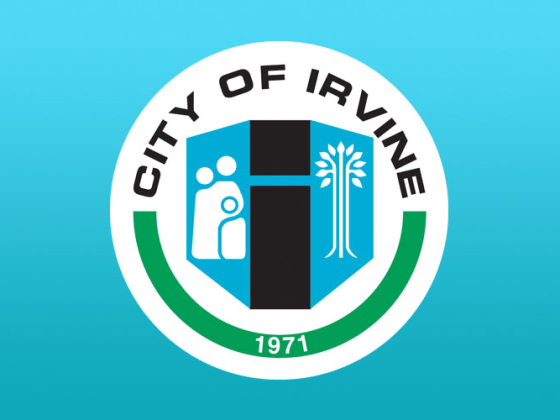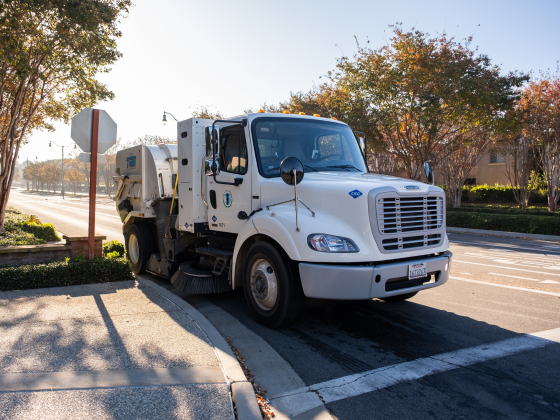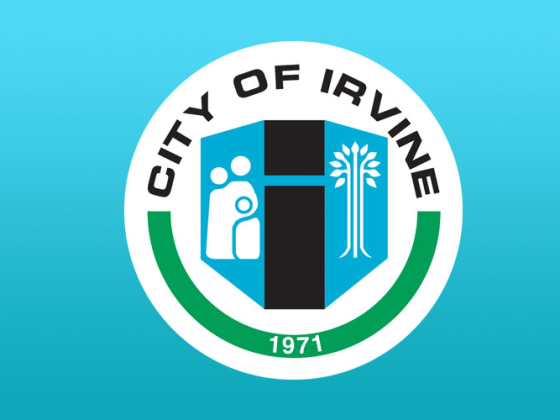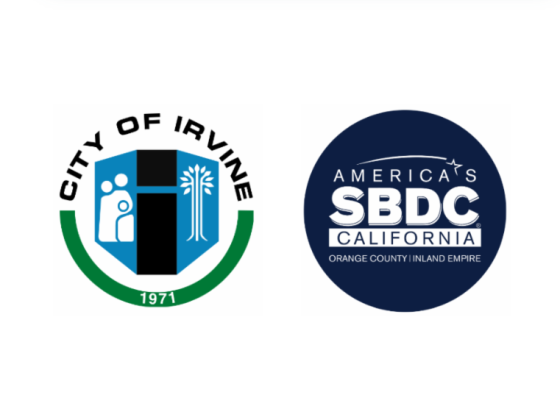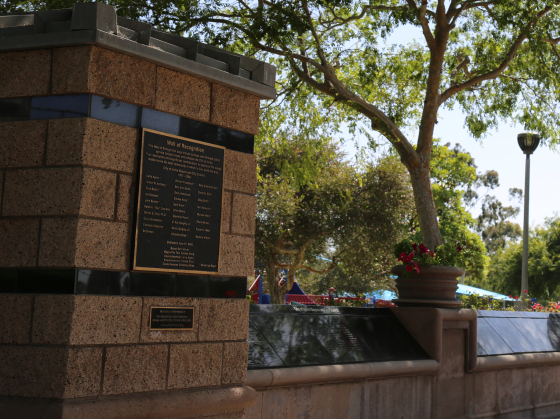Do you know why Jamboree Road is named as such?
Irvine staff compiled a list of 40 names from roads, parks and destinations for the City’s 40th Anniversary in 2011. As we start preparing for the 50th Anniversary in 2021, we would like to expand the list with the help of Irvine residents.
Send in your ideas; your suggestion could be part of our 50th Anniversary list!
Irvine: While it is generally known that the City of Irvine is named after pioneering rancher James Irvine, many names throughout the City represent Irvine’s historic people and milestones. Some of our favorites are listed below, reflecting the period before and after Irvine’s 40 years of incorporation.
Aldrich Park: UC Irvine’s famous circular park, which serves as the physical and symbolic heart of the campus, is named after the late Daniel G. Aldrich, the university’s founding chancellor.
Anteaters, UC Irvine: The Anteater, UC Irvine’s school mascot, is the nickname used by the university’s sports teams, which was inspired by the anteater in Johnny Hart’s comic strip, “B.C.” Proposed by UC Irvine students, the unusual mascot was, at first, not well received throughout the administration.
Beckman High School: Located in Irvine, the Tustin high school is named after Arnold O. Beckman, a world-renowned scientist and inventor, as well as a National Medal of Science honoree. He was a well-known philanthropist throughout Orange County, particularly in the field of education.
Bison Avenue: Located near UC Irvine, Bison Avenue was originally an access road to Buffalo Ranch, a popular tourist attraction that featured buffalo and tribal dances by Native Americans. Operated by Gene Clark, the great-grandson of famous Apache Indian chief Geronimo, the ranch was the first outside business to be allowed onto land owned by the Irvine Company.
Bommer Canyon Preserve: The protected open space, originally the home to Juaneño Band of Mission Indians and Gabriello Indians, is believed to be named after a Franciscan brother from Mission San Juan Capistrano who worked with area Native Americans in the early 1800s.
Colonel Bill Barber Marine Corps Memorial Park: The 40-acre park next to the Irvine Civic Center is named for the Korean War hero and Medal of Honor recipient, who was a longtime Irvine resident.
Concordia University: Founded in 1973 as Christ College, Concordia University is a private Christian university affiliated with the Lutheran Church – Missouri Synod. The school changed its name in 1993, becoming the 10th campus in the national Concordia University System.
Culver Drive: One of Irvine’s main streets, Culver Drive is named after businessman Frederick “Humpy” Culver. The corner of Culver and Trabuco, known as Culver’s Corner, was home to Mr. Culver in the early 1900s. Frederick’s brother, “Gimpy,” was reputed to be Irvine’s first full-time blacksmith; his name is attributed to his wooden leg, the result of a shootout with the Tomato Springs Bandit in 1912.
Deanna Manning Stadium: The City’s only softball stadium, at Bill Barber Park, is named for the former Community & Library Services Director who worked for Irvine from 1978 to 2004.
Great Park Farm: Before it was a military air base, the former Marine Corps Air Station El Toro was the largest lima bean field in North America. Seventy years later, it is once again a working farm, producing certified organic produce. The farm is operated by OC Produce, a third-generation Orange County farming company, run by AG Kawamura, a former California Secretary of Agriculture.
Hangar 244: The iconic hangar, now a key multi-use component of the Orange County Great Park, became operational after the Marine Corps Air Station El Toro was commissioned in March 1943.
Irvine Global Village Festival: The City of Irvine’s signature event is celebrated at Great Park. The daylong annual event features cultural entertainment; international cuisine; cultural and religious exhibits; and an international marketplace, all of which reflect Irvine’s diverse population.
Irvine Valley College: Irvine Valley College was known as Saddleback Valley College when it opened in 1979. Renamed in 1985, Irvine Valley College remains a sister campus to Saddleback College.
Jamboree Road: This major street in Irvine was named in honor of the dirt road leading to the 1953 International Boy Scout Jamboree, which was staged on a hill overlooking the Pacific Ocean, now known as Newport Center/Fashion Island.
Jeffrey Road: North Irvine’s main road is named for George Jeffrey, a pioneering Irvine farmer and blacksmith. Jeffrey served on the Orange County Board of Supervisors during the 1920s and 1930s.
Jeffrey Trail Middle School: The Irvine Unified School District’s newest middle school is located near the Jeffrey and Trabuco intersection. The name references the nearby Jeffrey Open Space Trail, linking the conservation and open space areas within the City.
Katie Wheeler Library: Built in 1876, the Irvine family residence is located at the present-day corner of Irvine Boulevard and Jamboree Road. A fire severely damaged the former ranch house in 1965, resulting in the demolition of the building. A replica building was completed in 2008 and was converted into a county library.
Knowlwood Restaurant: Located in Old Town Irvine, the site was originally a blacksmith’s shop that served the many needs of the agricultural area in the early 20thcentury.
La Quinta Hotel: The hotel, located in Old Town Irvine, opened in 1986. The original building was a bulk storage silo warehouse that stored lima beans and barley for distribution.
Marine Corps Air Station El Toro: Following the attack on Pearl Harbor, the base was commissioned in 1943; it was retired in 1999. Bases were traditionally named after the nearest post office, in this case, one that was located in the small community of El Toro, named after an old Spanish land grant and ranch. MCAS El Toro is now home to the Orange County Great Park and the contiguous Great Park Neighborhoods, the latter managed by private partner FivePoint Communities.
Mauchly Road: Located near Irvine Station, the road was named in honor of John W. Mauchly, the first person to propose the practical digital computer in 1943.
Michelson Drive: The key entrance to Park Place was named after Dr. Albert Michelson, who won the Nobel Prize in Physics in 1907 after accurately determining the speed of light. Michelson built a mile-long tube on the Irvine Ranch in 1929 to experiment with the speed of light.
Modjeska Road: The agricultural road, located off Irvine Boulevard near the Orange County Great Park, is named for Madame Helena Modjeska, a Polish-born actress who settled in the late 19th century in what is now the community of Modjeska Canyon.
Myford Road: This road was named for the son of James Irvine Sr., Myford, who became Irvine Company president in 1947, after his father’s passing.
Northwood Gratitude and Honor Memorial: Located at the City’s Northwood Community Park and dedicated in November 2010, the Northwood Gratitude and Honor Memorial is the nation’s first permanent memorial dedicated to every fallen service member in Afghanistan and Iraq.
Old Town Irvine: Historically the hub of agricultural operations and social interaction on the Irvine Ranch, the outpost at Sand Canyon Avenue and the I-5 now comprises a collection of renovated buildings reinvented for modern use. Old Town Irvine was preserved partially through the efforts of the Irvine Historical Society.
Palm Court Arts Complex: Located at the Orange County Great Park, the complex includes Great Park Studio, galleries and an outdoor performance and events space, which is distinguished by 54 Canary Island Date Palm trees.
Perez Road: The agricultural road, located off Irvine Boulevard, is named after the mother of former City of Irvine employee Victoria Jimenez. Victoria’s mother, Lupe Perez, and father, Felipe, raised their children on the Irvine Ranch.
Portola Parkway: The roadway, popular today for bicyclists, was named after Gaspar de Portola, a Spanish explorer who traveled up the California Coast from Mexico. He led the first land exploration in 1769 from San Diego to San Francisco, naming landmark features along the way, many of which are still used today.
Quail Hill: The community, located near Shady Canyon and Laguna Canyon Road, received its name from the hill at the corner of I-405 and University. Up until the 1980s, the hill was a favorite resting spot for quail during their migration.
Rancho San Joaquin: Given to Don Jose Andres Sepulveda in 1841, Rancho San Joaquin was a 48,803-acre land grant from the Mexican government, which eventually became part of the Irvine Ranch. Rancho San Joaquin lends its name to several areas and locations in Irvine, including a residential village, a golf course and a middle school.
Rowland Hall, UC Irvine: The hall is named for UCI professor F. Sherwood Rowland, who was the 1995 recipient of the Nobel Prize in chemistry.
Ryan Lemmon Stadium: The baseball stadium, located in Windrow Athletic Community Park, was named after Ryan Lemmon, an Irvine resident and star baseball player from Woodbridge High School. In 1995, following the loss of his son, his father established the Ryan Lemmon Foundation as a way to give back to the baseball community.
Turtle Rock Village: One of the five villages originally forming Irvine, Turtle Rock Village was founded in 1967. Its unique name comes from a rocky outcropping of granite, located on Rockview Drive, having the shape of the front of a turtle’s shell, which was a sacred symbol to the Gabrielino Native Americans.
Venta Spur Trail: In 1916, James Irvine Jr. built a citrus packing house, served by a rail spur off the Atchison Topeka & Santa Fe Railroad. Long after the rail line and packing house ceased operations, the City created the Venta Spur Trail.
Village of University Park: One of the first villages in Irvine, it was designed to serve as a district for those connected to the young UC Irvine campus.
Village of Woodbridge: The iconic village in the heart of Irvine takes its name from the wood bridges crossing the two lakes that define the community.
Watson Bridge: The pedestrian bridge that links UC Irvine with the community is named in honor of Raymond L. Watson, the Irvine Company’s first architect and planner, who played an instrumental role in forging enduring relationships among the City of Irvine, UCI and the Irvine Company.
William Woollett Jr. Aquatic Center: Located next to Irvine High School, the aquatic center is named for the City of Irvine’s first City Manager. Bill Woollett was the Assistant Venue Manager for the 1984 Olympic swimming events in Los Angeles, as well as the pentathlon swimming event, held at what was formerly known as the Heritage Park Aquatics Complex.
Special acknowledgments: The City of Irvine staff would like to thank the Irvine Company and the Irvine Historical Society for its assistance in compiling this list.


